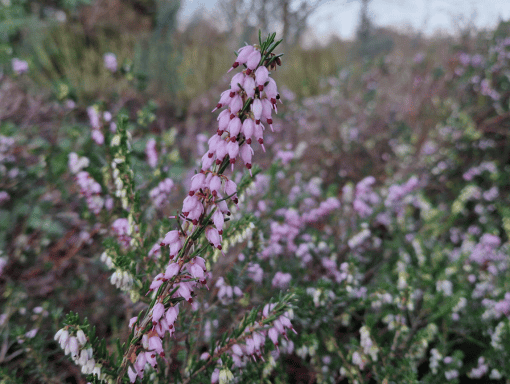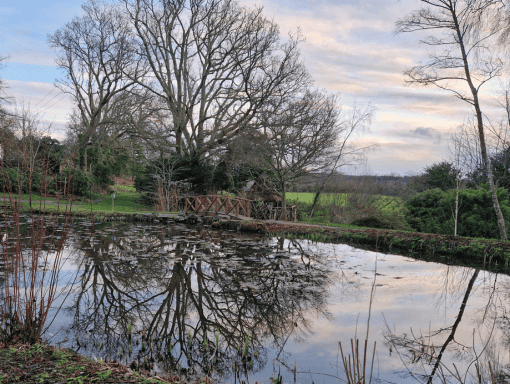Head of Horticulture blog: January 2025
January is often a quieter month in the gardening calendar, with cold temperatures and short days limiting outdoor activities. However, it is the perfect time for you to prepare your garden for the upcoming growing season. With careful planning and a few practical tasks, January can set the foundation for a productive and thriving garden throughout the year.
From planning and maintenance to planting and pruning, here are the key tasks you can tackle over the next few weeks.
Planning and Preparation
January is an ideal time to plan your garden for the year ahead. Start by reviewing last year’s successes and challenges, noting what worked well and what didn’t. Use this reflection to decide on new plants to grow, changes to the layout, or improvements to soil quality.
Creating a planting calendar can help you stay organised. Research the best planting times for your chosen crops and flowers, taking into account the UK’s climate and any regional variations. For example, hardy vegetables such as onions and garlic can often be planted earlier than tender crops like tomatoes. Similarly, plan ornamental plantings to ensure a continuous display of flowers throughout the seasons.
This is also a great time to order seeds, bulbs, and other supplies. Popular varieties can sell out quickly, so acting early ensures you have access to your desired selections. Consider sourcing seeds from local suppliers or seed-swapping groups to support biodiversity and sustainable gardening.
General Garden Maintenance
Although many plants lie dormant in January, general maintenance tasks can still be carried out to prepare your garden for spring. Clear away debris such as fallen leaves, twigs, and any remaining plant matter from last year’s crops. This not only keeps the garden tidy but also reduces the risk of pests and diseases overwintering.
Inspect garden tools and equipment, cleaning and sharpening as necessary. Well-maintained tools make gardening tasks easier and more efficient, and taking care of them during winter extends their lifespan. For example, oiling wooden handles and metal parts helps prevent damage caused by damp conditions.
If you have a greenhouse, January is an excellent time to clean it thoroughly. Wash the glass, clear gutters, and disinfect benches and pots to create a hygienic environment for plants. Doing so maximises light penetration and minimises the risk of pests and diseases.
Soil Care and Composting
Healthy soil is the cornerstone of a successful garden, and January is an opportune time to improve its condition. If the ground is not frozen, dig over empty beds, removing any weeds and incorporating organic matter such as well-rotted manure or compost. This helps improve soil structure and fertility in time for spring planting.
Mulching is another valuable task to undertake. Applying a layer of mulch—such as bark, straw, or compost—around the base of plants provides insulation, suppresses weeds, and retains moisture. In colder regions, mulch also protects roots from freezing temperatures.
Turn your compost heap if weather conditions allow, ensuring even decomposition and aeration. January is also a good time to start a new compost heap, especially if your current one is nearly full. Include a mix of green (nitrogen-rich) and brown (carbon-rich) materials to maintain balance.
Pruning and Cutting Back
Pruning is a key task during January, particularly for deciduous trees, shrubs, and fruit plants. With leaves absent, it is easier to identify the structure of plants and remove dead, diseased, or crossing branches. Prune apple and pear trees during their dormant period to encourage healthy growth and fruiting.
Roses can also benefit from a winter prune, cutting back to outward-facing buds to promote an open, airy shape. Similarly, cut back ornamental grasses and perennials that were left for winter interest, making room for new growth in spring.
Hedges and evergreen shrubs can be lightly trimmed to maintain shape. Be mindful of wildlife, avoiding pruning areas where birds or small mammals may be sheltering.
Sowing and Planting
Although January is still too cold for most outdoor sowing, some hardy plants can be started indoors or in a greenhouse. Seeds such as broad beans, onions, and leeks can be sown in trays or modules, giving them a head start before transplanting later in the year. Early potatoes can also be “chitted” by placing them in a cool, light environment to encourage sprouting.
For flower enthusiasts, January is a good time to sow early varieties of sweet peas, which can grow on a windowsill or in a greenhouse. These early sowings produce stronger plants that bloom earlier in the season.
If the ground is workable, plant bare-root trees, shrubs, and hedging. Bare-root plants are often more affordable than potted alternatives and establish well when planted during their dormant phase.

Pale lilac winter heather starting to bloom

Acer reflected in the pond on a winter day
Caring for Wildlife
Finally, January is a challenging month for garden wildlife, so take steps to support birds, insects, and other creatures. Keep bird feeders stocked with high-energy foods such as sunflower seeds, fat balls, and peanuts. Ensure water sources are available and unfrozen, as hydration is essential for survival during winter.
Consider creating habitats such as log piles, rockeries, or leaf mounds to provide shelter for insects, frogs, and hedgehogs. These simple additions enhance biodiversity and help maintain a balanced ecosystem.
While January may not be the most visually rewarding month in the gardening calendar, it is undoubtedly one of the most important. The tasks completed during this month lay the groundwork for a flourishing garden throughout the year. By focusing on planning, maintenance, soil care, pruning, sowing, and supporting wildlife, gardeners can make the most of this quieter period and set themselves up for a thriving year ahead.
What’s happening at Furzey Gardens?
January is a quiet month at Furzey Gardens as we plan our year ahead. The gardens and tea rooms are closed until Saturday 15 February when we reopen for February half term. We are looking forward to another season full of activities and events to suit a variety of tastes. Don’t miss our exciting new art trail ‘Jurassic Furzey’, landing in the gardens this summer. Decorated by talented local artists, the dinosaurs themselves have been created in the workshops at Minstead Trust by people with learning disabilities.
The Handlebards return to Furzey in June for another dose of madcap mayhem with their retelling of Shakespeare’s classic comedy – Much Ado About Nothing. A handful of early bird tickets are still available – but don’t delay, we expect them to sell out! General tickets will go on sale soon, www.furzey-gardens.org/whats-on.
In the gardens themselves we are already starting to see the first few sights of spring with some early daffodils popping up and lots of bulbs pushing through the garden hinting at what is to come in spring. January is the perfect time for us to carry out some essential maintenance tasks in the tea rooms and the gardens, but we can’t wait to welcome you back when we reopen in February.
This article originally appeared as the monthly In The Garden column in the Lymington Times, buy the paper on the second Friday of every month to read the next column first.
